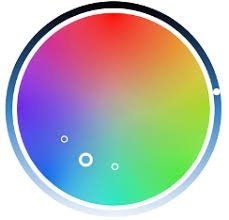Greater Noida: (National Desk): A new research published in the *Science Advances* journal on April 18 has surprised scientists and common people around the world. Researchers at the University of California, Berkeley have discovered a color that no human has seen before. Scientists have named this mysterious and unprecedented colour ‘Olo’.
So far only five people have seen this new colour. They say that this color is something like the peacock’s blue or teal color, but much brighter and more saturated. Researchers say that humans with normal vision can only imagine this colour, because it is beyond the limits of our normal colour vision.
How was ‘Olo’ seen?
There is a very advanced scientific process behind this extraordinary discovery. Researchers fired laser pulses on the retina of the participants’ eyes. This laser specifically activates the M Cones present in the retina, which are not stimulated by any natural light under normal circumstances. Usually, human eyes recognize colors through three types of cones—L (sensitive to red), M (green), and S (blue). However, it is difficult to activate the M cones. Scientists overcame this challenge and generated a new visual experience by directly targeting the M cones.
Researchers say that this experience was completely unexpected. According to electrical engineer Ren Ng, “We had anticipated from the beginning that this color would be something new, but when we saw it, it was shocking. Its saturation level was incredible.” Vision scientist Austin Roorda said, “The colours we normally see fade in front of ‘Holo’. This experience is completely different from our ability to see colours.”
Will common people be able to see ‘Holo’?
Keeping in mind the laser technology and scientific process required to see this unique colour, the researchers believe that in the coming times, it will not be possible to see ‘Holo’ in technologies like smartphones, TV or VR headsets. This is still a long way off technically. Scientists have shared a picture of turquoise colour to explain ‘hail’, but they believe that this is just an attempt. No screen or print can accurately show the depth and richness of real colour. It is completely a unique response of the brain and vision system.
The discovery of ‘hail’ is not only a new achievement in the eyes of science, but it is also a new step towards understanding the limitations of human vision and brain. It shows that our ability to think and see is still limited and science is constantly challenging these limits.









